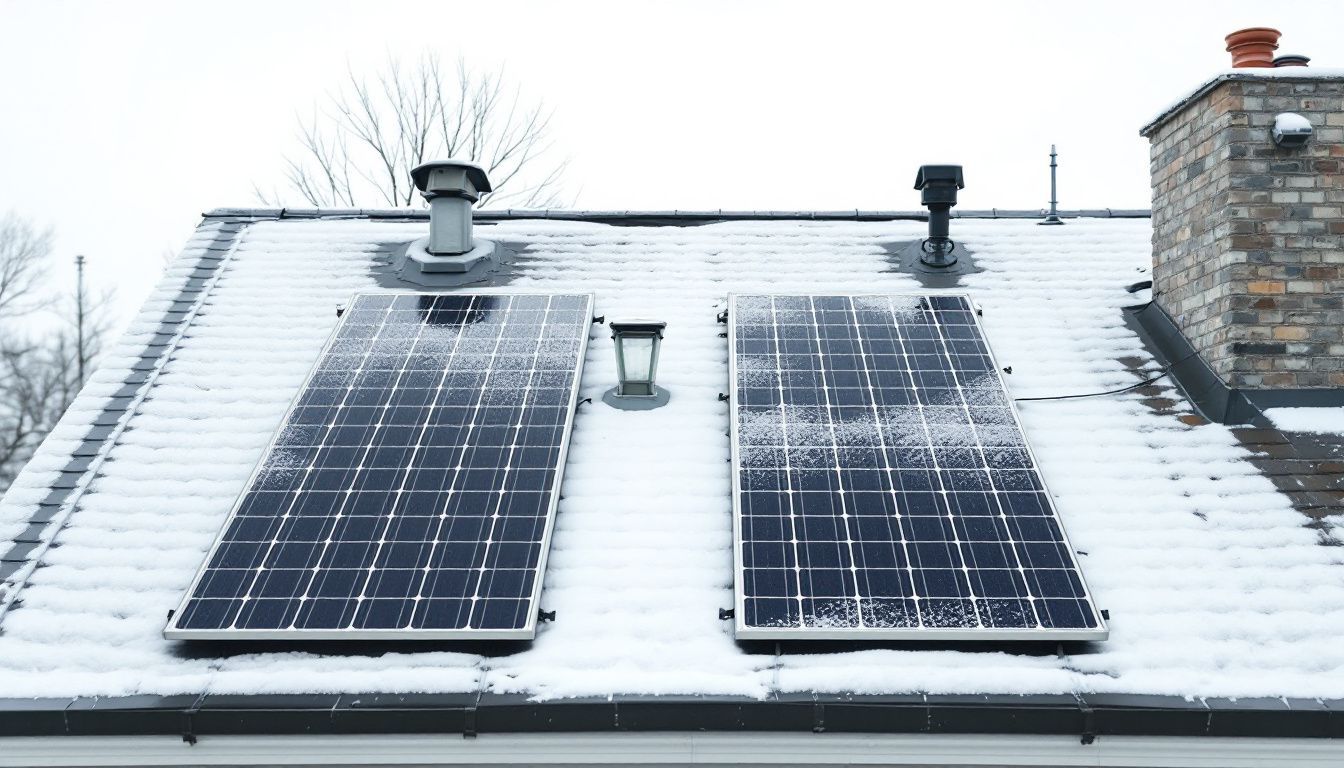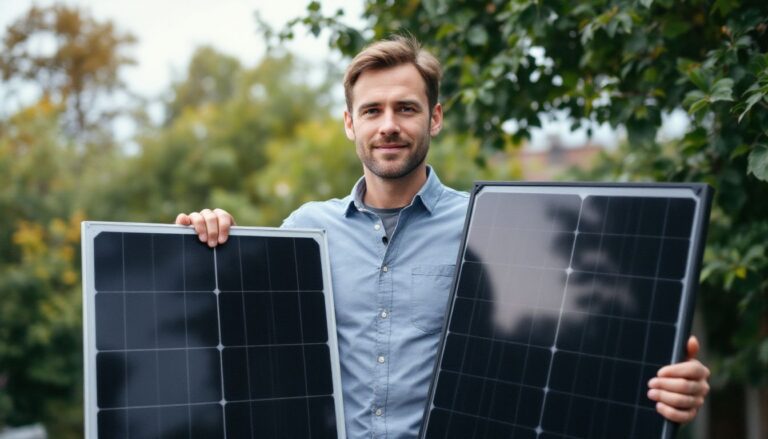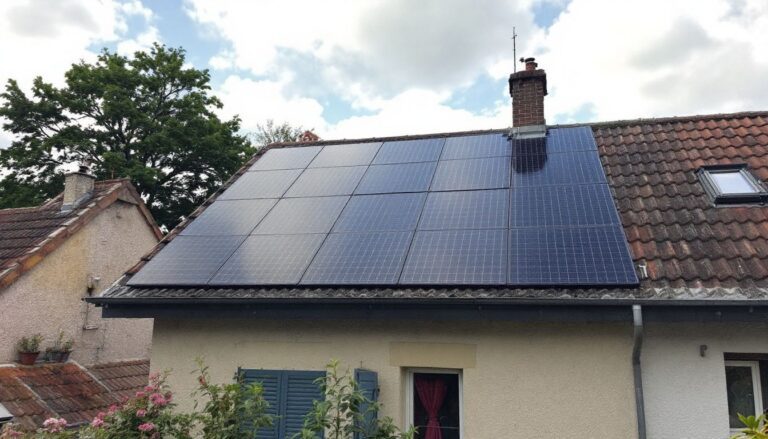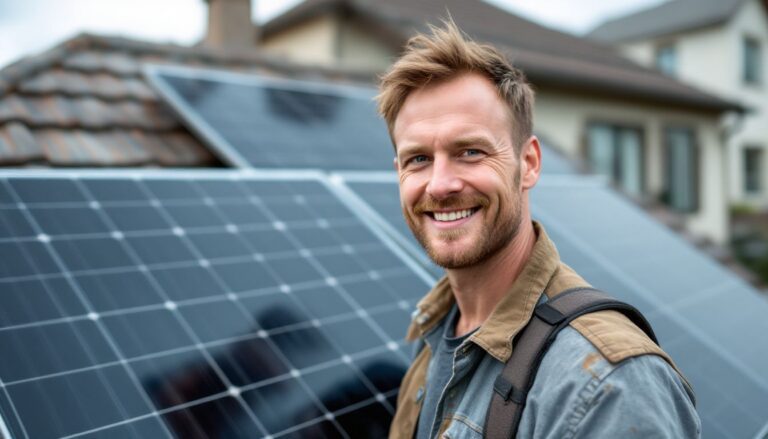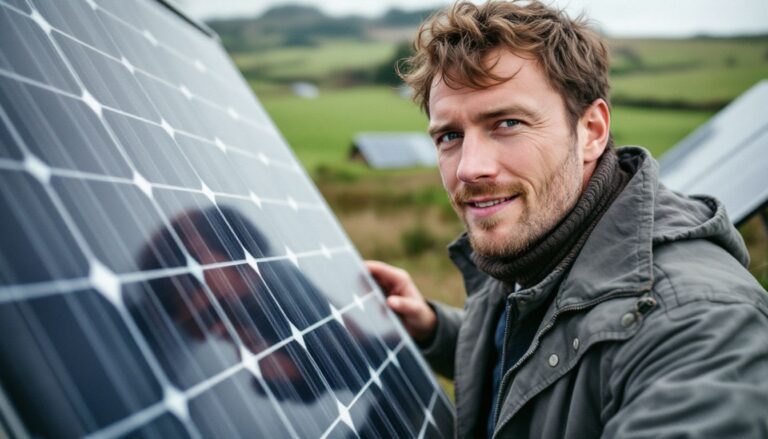Comment la production d’énergie diffère-t-elle entre panneaux solaires monocristallins et polycristallins en hiver ?
Are winter months lowering your solar panel energy output? Monocrystalline panels, made from a single silicon crystal, reach up to 24% efficiency. This article compares their winter performance to polycrystalline panels, helping you choose the most efficient option.
Discover which solar panel keeps your energy flowing all season.
Key Takeaways
- Higher Efficiency: Monocrystalline panels have 16% to 24% efficiency in winter, better than polycrystalline panels, which have 14% to 18%.
- Better in Low Light: Monocrystalline panels work well in cloudy and low sunlight conditions, making them ideal for winter.
- Cost Differences: Monocrystalline panels cost around €8,000 for a 3 kW system, while polycrystalline panels are cheaper at €6,500.
- Durability in Cold: Both panel types perform well in cold temperatures, but monocrystalline panels maintain more energy output.
- Improving Technology: New technologies are making both panels work better in winter, increasing their reliability and efficiency.
Overview of Monocrystalline and Polycrystalline Solar Panels

Monocrystalline solar panels use single-crystal photovoltaic cells, delivering higher efficiency and longer lifespan. Polycrystalline panels consist of multiple crystals, providing a cost-effective solar option with slightly lower performance.
Basic characteristics of each type

Monocrystalline solar panels use pure silicon crystal cells. They appear black with blue reflections and have a longer durée de vie. These panneaux solaires monocristallins offer higher efficiency rates.
Their manufacturing is costly, increasing their price. The empreinte écologique is lower due to their efficiency.
Polycrystalline panels consist of multiple silicon crystals. They are generally blue and cost less to produce. Panneau polycristallin have a simpler manufacturing process, making them more affordable.
These panneaux solaires provide good durability and a reliable durée de vie. They are a popular choice for cost-effective photovoltaic systems.
Typical efficiency rates
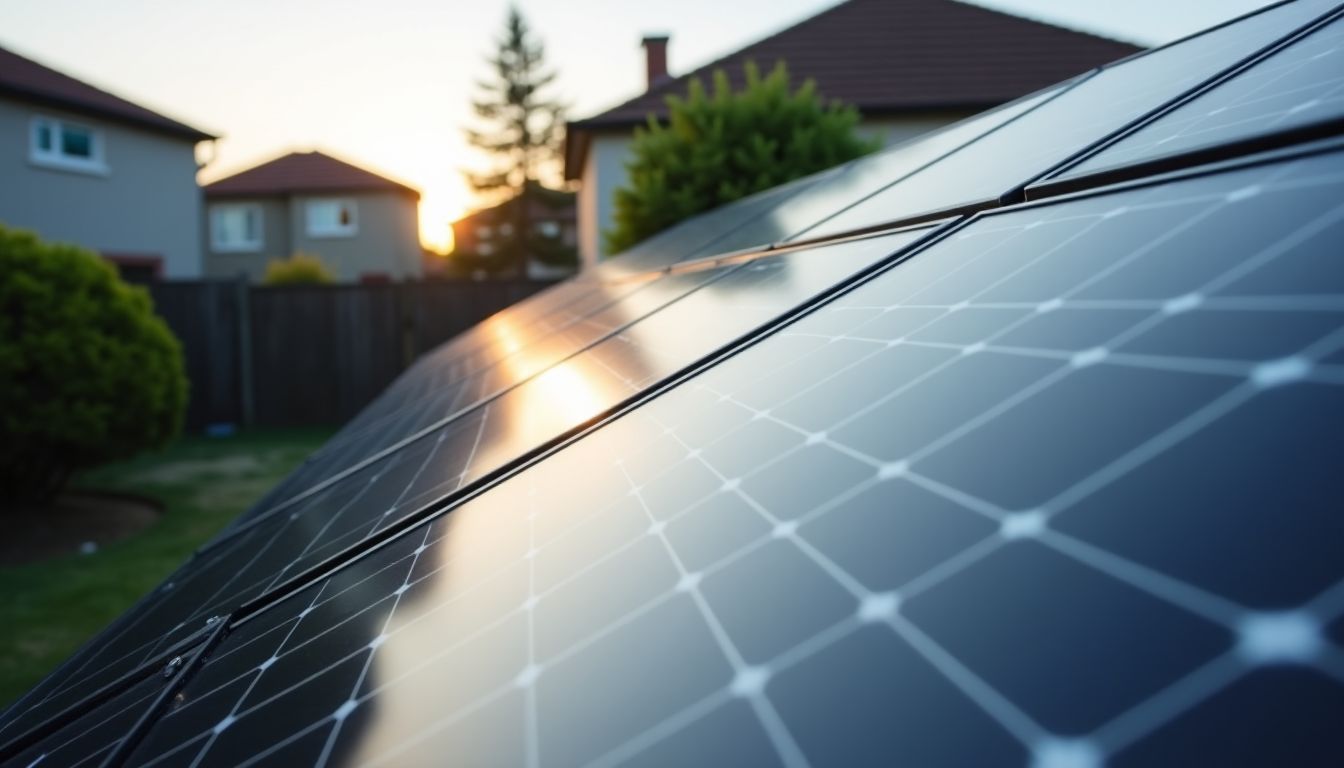
Monocrystalline panneaux solaires have efficiency rates between 16% and 24%. High-efficiency cellules photovoltaïques can reach up to 24%. This makes them ideal for low sunlight areas.
Polycrystalline panneaux solaires are slightly less efficient, with rates from 14% to 18%. They offer a reliable energy source at a lower cost.
Choosing the right panneau solaire can maximize your energy production.
Winter Challenges for Solar Panels
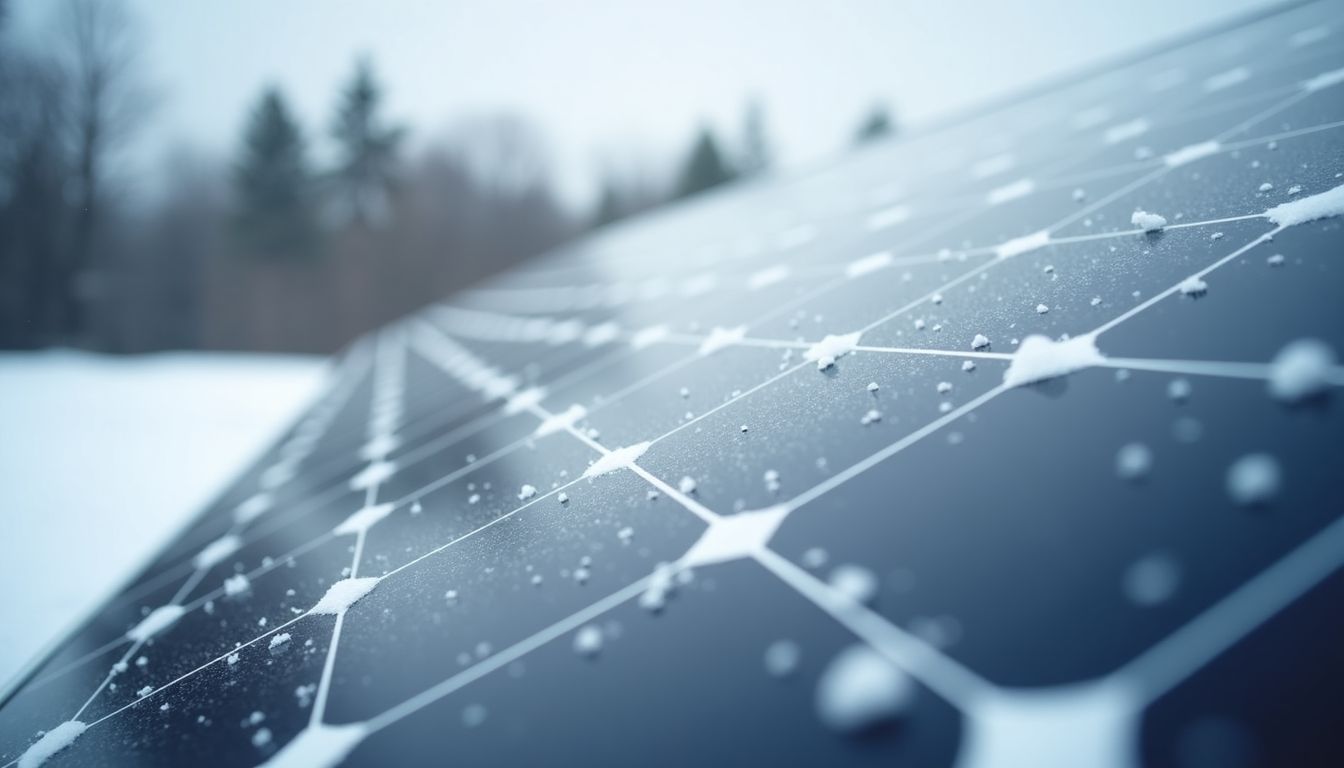
Winter brings shorter days and cloudy skies, limiting sunlight for solar panels. While cold can boost some panels’ efficiency, snow and ice often cover them, decreasing their power generation.
Reduced sunlight exposure
Sunlight is less in winter. Monocrystalline panels stay efficient with low sun. Polycrystalline panels lose some efficiency when it’s cloudy. Snow can reduce energy by up to 20%.
Positioning and tilt angles help capture more light. Obligation d’achat ensures energy is sold fairly.
Impact of cold temperatures on solar efficiency
Cold temperatures stabilize solar panel performance. Monocrystalline and polycrystalline panels work better in cooler weather. Cold enhances electron activity, boosting energy conversion rates.
Winter reduces sunlight exposure, which can lower efficiency. Proper maintenance, like keeping panels clean, lessens winter efficiency losses.
Cold weather can enhance the performance of solar panels, making them more efficient even with lower light.
Next, we explore how monocrystalline panels produce energy during winter.
Energy Production in Monocrystalline Panels During Winter

Monocrystalline panels keep their efficiency high even when sunlight is low. Cold weather helps them perform steadily throughout the winter.
Higher efficiency in low light conditions
Monocrystalline panels achieve 21% to 24% efficiency. They perform well in low light. Pure silicon cells boost their performance when sunlight is limited. High efficiency ensures steady energy production during winter.
These panels work reliably in cloudy or overcast conditions.
Performance stability in cold weather
Cold temperatures help solar panels perform well. They stay efficient even with less sunlight. The black structure of monocrystalline panels absorbs more light. Cold weather boosts electron activity, ensuring steady energy output.
These panels provide consistent power in winter and work well in areas with low sunlight.
Energy Production in Polycrystalline Panels During Winter

Polycrystalline panels can produce a bit less power on cloudy winter days. They stay reliable in the cold, keeping energy generation steady.
Slight decrease in efficiency under cloudy conditions
Polycrystalline solar panels operate with efficiency rates between 14% and 18%. When clouds cover the sky, their efficiency drops slightly. These panels capture less sunlight on cloudy days, reducing energy production.
Their blue color makes them less effective compared to monocrystalline panels under overcast conditions.
In winter, sunlight is already limited, and cloud cover further impacts polycrystalline panels. The decreased sunlight means lower energy output during cloudy periods. Despite this, polycrystalline panels remain suitable for areas with varying sunlight, but they perform better in clearer skies compared to cloudy ones.
Durability and performance in varying temperatures
Polycrystalline panels resist damage in different temperatures. They handle cold and heat well. These panels maintain steady performance despite temperature changes. Efficiency drops 0.8% to 1% each year.
Monocrystalline panels also endure temperature shifts. They perform slightly less in cold weather but remain cost-effective. Both panel types manage sunlight exposure changes. Their blue color enhances durability in winter.
Comparative Analysis of Winter Performance
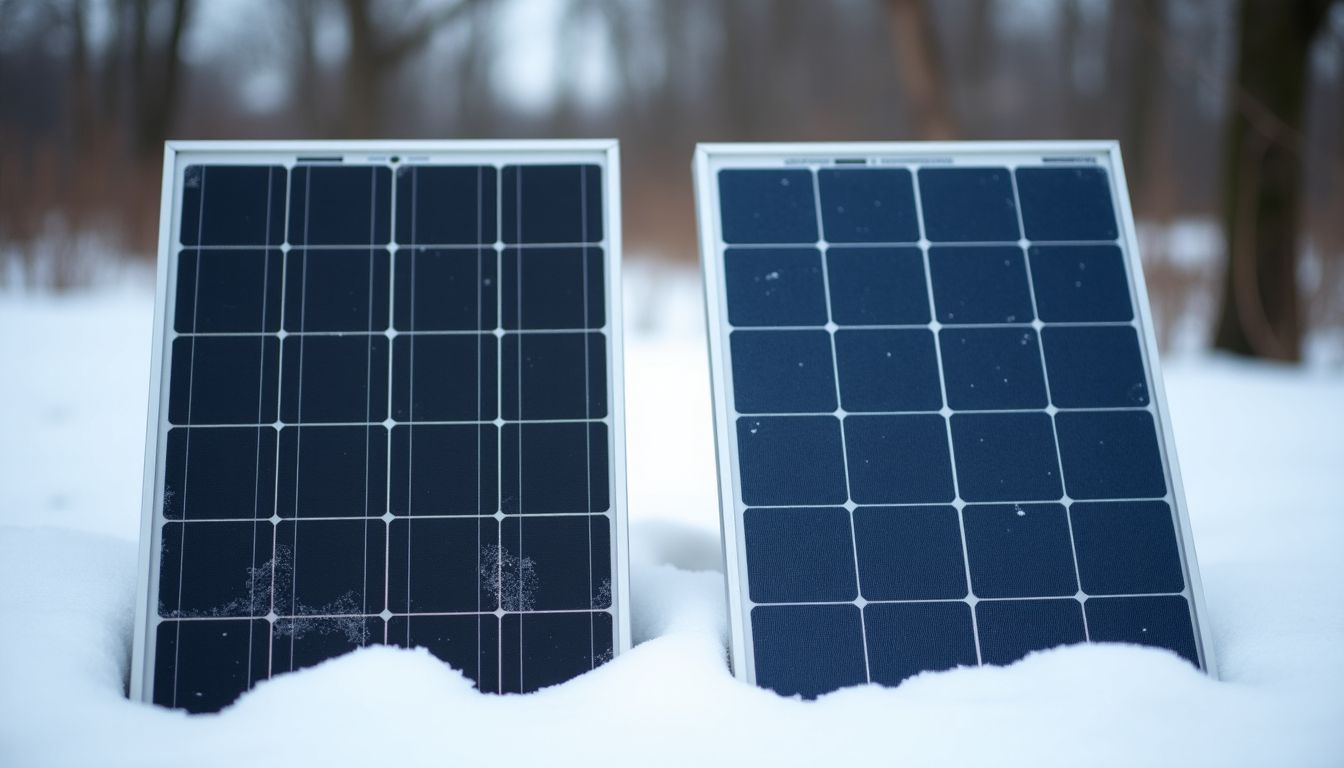
Monocrystalline panels typically produce more energy in winter because they work well in low light. Polycrystalline panels may be slightly less efficient but stay reliable in cold temperatures.
Side-by-side efficiency comparison in winter conditions
In winter conditions, monocrystalline and polycrystalline solar panels perform differently. The table below compares their efficiency side-by-side:
| Feature | Monocrystalline Panels | Polycrystalline Panels |
|---|---|---|
| Efficiency Rate | 16% to 24% | 14% to 18% |
| Low Light Performance | Higher efficiency in low light | Less efficient under cloudy conditions |
| Cold Weather Performance | Stable performance in cold temperatures | Good durability but slight efficiency decrease |
| Cost | More expensive | Less expensive |
| Annual Efficiency Decline | 0.8% to 1% per year | 0.8% to 1% per year |
Cost-effectiveness considering winter performance
Monocrystalline panels cost about €8,000 for a 3 kW system. They perform well in low sunlight, making them more cost-effective in winter. Polycrystalline panels are cheaper at €6,500 for the same size.
However, their efficiency drops in cloudy winter conditions, reducing their cost-effectiveness. Maintenance affects both types, influencing efficiency and overall costs. Financial assistance is available, with an investment bonus of up to €2,492.
This support can help lower the total expense of installing solar panels during the colder months.
Future Trends and Developments
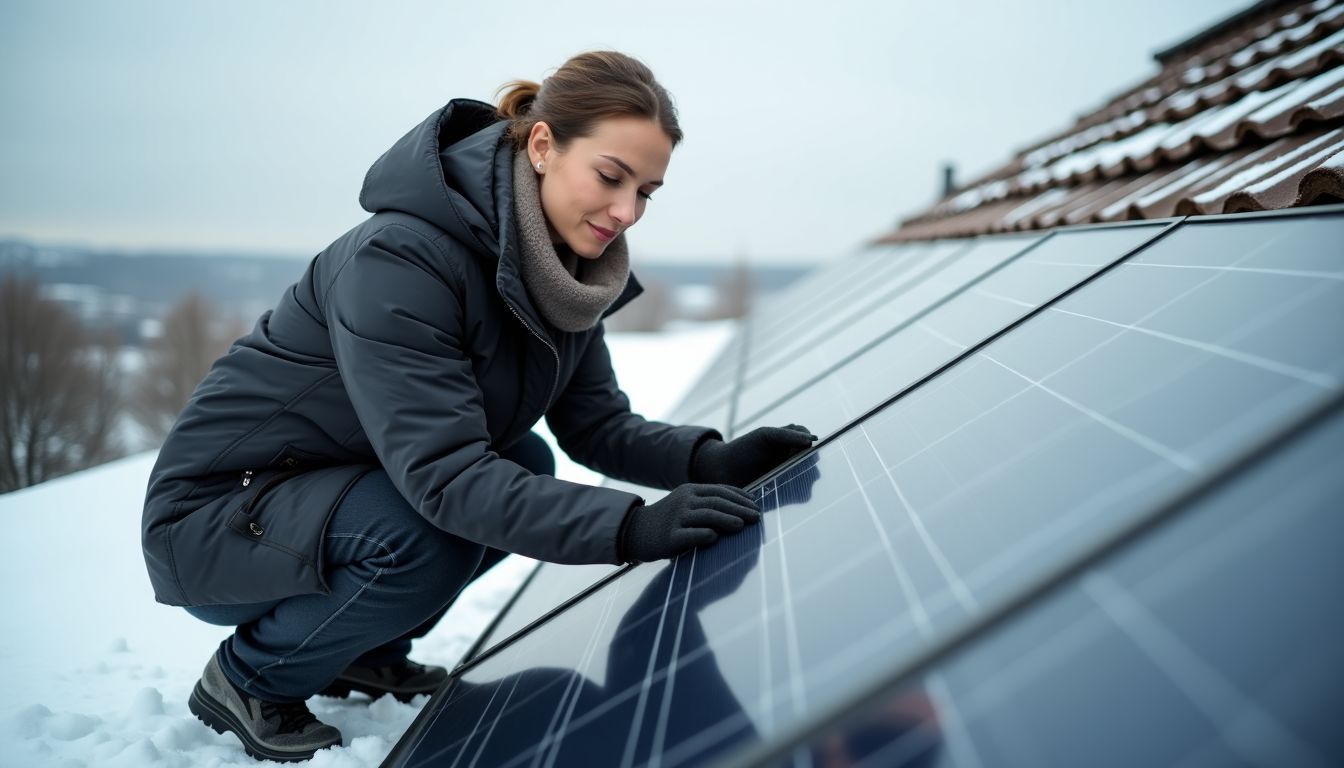
Advancements in solar technology are improving panel performance during winter. New materials and designs help boost energy efficiency in cold, low-light conditions.
Technological advancements improving winter performance
New materials boost solar panels in winter. Energy density has increased, allowing panels to generate more power. Panels now convert up to 24% of sunlight into energy. They perform better in low light, capturing more energy on cloudy days.
Manufacturing costs have decreased due to innovative processes. Improved designs enhance output in cold temperatures.
Advancements support winter efficiency. Panels use smart inverters to optimize energy flow. Anti-reflective coatings keep snow off, maintaining performance. Tracking systems move panels to follow the sun, increasing energy capture.
These technologies ensure reliable energy production during winter months.
Emerging materials and technologies
High-efficiency solar panels now reach conversion rates of up to 24%. Innovations in material science increase energy density and boost performance. Flexible panels are gaining popularity, offering efficiencies between 11% and 13%.
These panels adapt to various surfaces and conditions. Technological advancements also lower production costs, making solar energy more affordable. Emerging technologies enhance winter efficiency, ensuring reliable energy production during cold months.
Advancements improve panel durability and performance in harsh weather. New materials help panels capture more sunlight even on cloudy days. Energy density innovations allow more power from smaller panels.
These developments position solar energy as a strong choice for winter months.
Conclusion
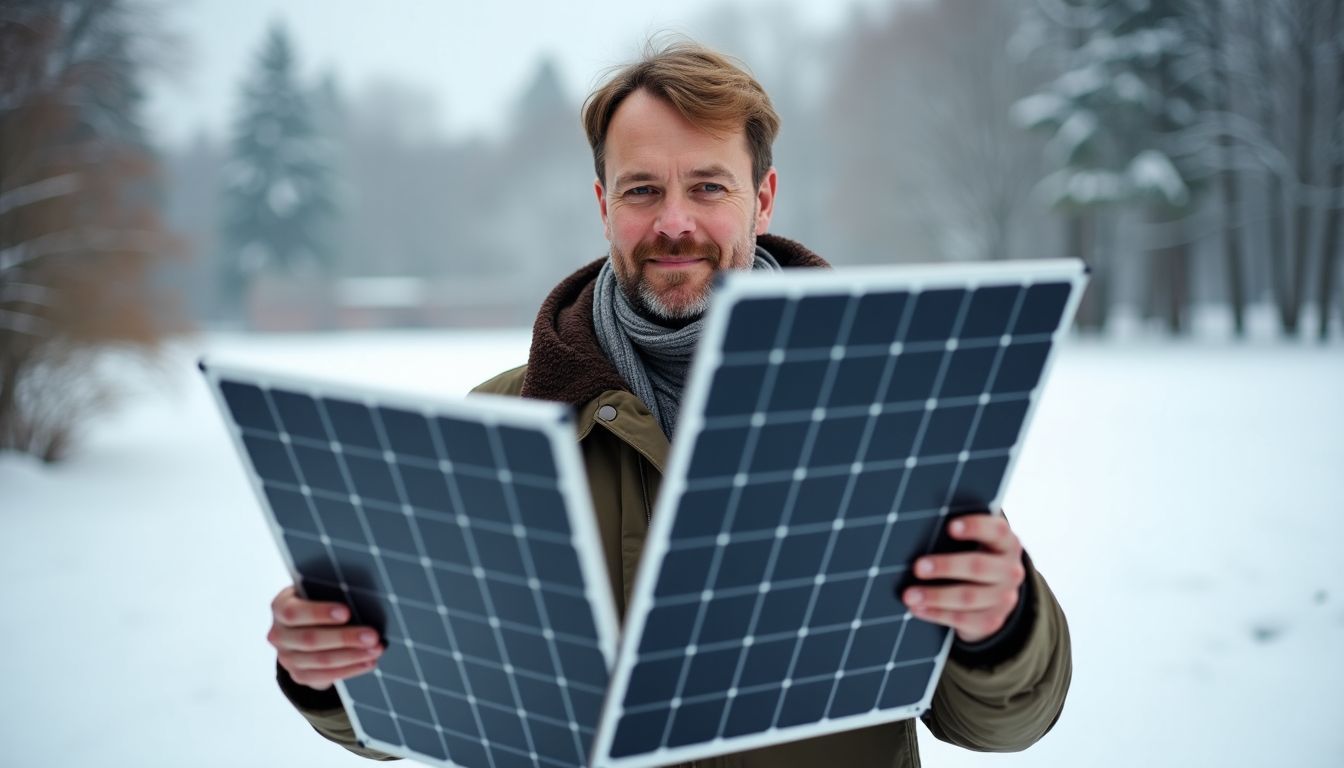
Monocrystalline panels excel during winter with higher efficiency in low light and stable performance in cold temperatures. Polycrystalline panels maintain durability and steady energy production, even when the sky is overcast.
Choosing between them depends on factors like budget and location-specific sunlight availability. Advances in solar technology continue to enhance both panel types, ensuring reliable energy production year-round.

